#Buffalo Meat Exporter
Text
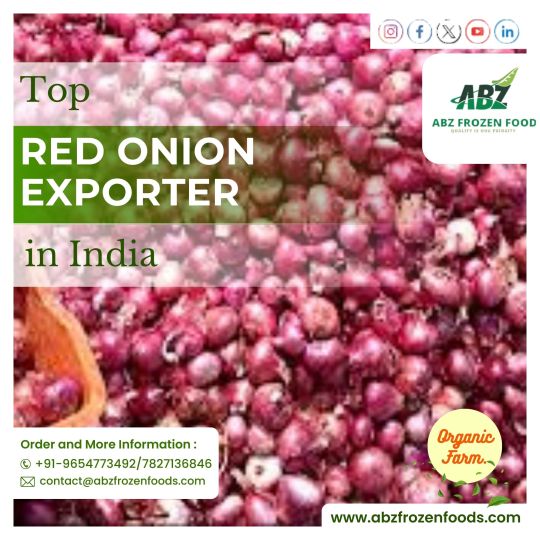
Top Red Onion Exporter in India
With their mitigating and cell reinforcement characteristics and the presence of flavonoids like quercetin, red onion can bring down the possibility creating constant ailment and a few sorts of disease. Our products are harvested with a reduced risk of heart disease since they have a high nutritional value and are low in cholesterol, saturated fat, and sodium.For more details please call +91-9654773492,7827136846 or visit our website https://abzfrozenfoods.com/red-onion-exporter.html
#Red Onion Exporter#Indian Buffalo Meat#Buffalo Meat Exporter#Buffalo meat exporter from India#Frozen Buffalo meat Exporters in India#Onion Exporter from India#Top Red Onion Exporter in India#Wheat flour Exporter#Yellow Maize Exporter#Green Millet Exporter#Semi Husk Coconut Exporter
0 notes
Text

Leading Supplier and Exporter of Buffalo Meat Exporter
We are ABZ Frozen Foods is a leading supplier and exporter of Buffalo Meat Exporter. India exports most of it's Buffalo meat to Vietnam, United Arab Emirates and Saudi Arabia and is the largest exporter of Buffalo meat in the World. Call @+91-9654773492/ +91-7827136846 or visit https://abzfrozenfoods.com/buffalo-meat.html
#Buffalo Meat Exporter#Buffalo meat exporter from India#Frozen Buffalo meat Exporters in India#Indian Buffalo Meat Exporter
1 note
·
View note
Text
The Booming Frozen Food Export Industry in India: Key Insights and Trends
India's frozen food export industry is rapidly gaining prominence on the global stage. With a diverse array of products including fruits, vegetables, seafood, and snacks, India has established itself as a leading exporter in this sector. In this article, we'll delve into the key highlights, emerging trends, and critical data driving frozen food exports from India.
Why India’s Frozen Food Export Industry is Thriving
The frozen food sector in India is experiencing remarkable growth due to several compelling factors:
Increasing Domestic Demand: The rising preference for convenience foods among Indian consumers is bolstering the frozen food sector. As lifestyles become busier, frozen foods offer a quick and easy solution for meals.
Government Initiatives: The Indian government has introduced various schemes and incentives to support the food processing industry. These initiatives aim to boost exports and enhance infrastructure.
Rising Domestic Incomes: As incomes increase, the demand for a diverse range of high-quality frozen foods is growing, both domestically and internationally.
Changing Lifestyle: There is a global shift towards convenience foods, and frozen foods are increasingly becoming a staple due to their extended shelf life and ease of preparation.
India’s Frozen Food Export Statistics
According to the latest data, India's frozen food export sector is robust and expanding:
Total Exports: India exported 244.8K frozen food shipments, making it the world's largest exporter of frozen foods.
Number of Exporters: There are 741 exporters from India involved in the frozen food industry.
Top Importers: The United States, Australia, and the UK are the primary destinations for Indian frozen food exports.
India's frozen food exports cover a broad spectrum of products including:
Vegetables and Fruits: Spinach, green peas, mangoes, okra, and strawberries are among the popular frozen produce.
Seafood: Indian mackerel, ribbonfish, black tiger shrimp, and vannamei shrimp are highly sought after in global markets.
Meat and Poultry: The country exports frozen chicken parts, processed meat products, and buffalo meat.
Cooked and Frozen Snacks: Indian cuisine's global appeal extends to frozen curries like saag paneer and butter chicken, as well as snacks such as fries and veggie fingers.
Top Frozen Food Exporting Countries
Globally, the top three exporters of frozen food are
Belgium
China
Mexico
Belgium led the pack with $1.4 billion in exports in 2021, showcasing its strong position in the frozen food market.
Leading Frozen Food Exporters in India
Several companies are prominent players in India's frozen food export market:
McCain Foods India Pvt. Ltd.
Schreiber Dynamix Dairies Ltd
Nestle India Ltd. (Frozen Food Division)
Godrej Tyson Foods Ltd
M.K.R. Frozen Food Exports Pvt. Ltd.
Al Ammar Frozen Foods Export Pvt. Ltd.
These companies are instrumental in driving the export growth of frozen foods from India.
Future Outlook and Market Trends
The frozen food sector is projected to grow at a rate of 0.9% annually, reaching $7 billion by 2026. This growth is fueled by the increasing global appetite for frozen foods and advancements in food processing technologies. As India continues to invest in infrastructure and quality standards, it is well-positioned to maintain its leading role in the global frozen food market.
Conclusion
India's frozen food industry is on an upward trajectory, driven by both domestic demand and international market opportunities. With its diverse product range and growing export capabilities, India is set to become a major player in the global frozen food sector. For businesses looking to tap into this lucrative market, keeping up with the latest export data and market trends is crucial. Platforms like Eximpedia offer valuable insights and data to help navigate this dynamic industry.
FAQs
Is the frozen food business profitable in India?
Yes, it is. The sector is thriving due to increasing demand and supportive government initiatives.
Which is the largest frozen food company in India?
McCain Foods India Pvt. Ltd. is currently the largest frozen food exporting company in India.
What is the HS code for frozen vegetarian food?
Major HS codes for frozen vegetarian foods include 0710, 07109000, and 2005.
What is the market size of frozen food in India?
The global frozen food market is expected to reach $7 billion by 2026, with India playing a significant role in this growth.
For the latest insights and data on frozen food exports from India, visit Eximpedia.app.
#frozen food exports from India#frozen food export data#frozen food exporters#frozen food exporters in India#frozen food hs code#frozen food manufacturers
0 notes
Text
How India Became a Global Leader in Agricultural Commodities Exports
India has emerged as a global leader in the import export of agricultural products, leveraging its vast agricultural resources, strategic policies, and innovation. Over the years, the country has made significant strides in becoming one of the largest agricultural commodities exporters from India, with its products reaching countries across the globe. This success is built on a foundation of government support, private-sector involvement, and a focus on quality and sustainability.

Key Agricultural Commodities Exported from India
India’s agricultural export basket is diverse, covering everything from staple crops to value-added products. The country is one of the world’s largest exporters of rice, wheat, sugar, spices, tea, and coffee. Fruits, vegetables, and processed foods also make up a significant portion of the export of agriculture and agro-based products. In particular, basmati rice, buffalo meat, and marine products contribute immensely to India's agricultural export earnings.
Government Policies Boosting Agricultural Exports
The Indian government has played a crucial role in promoting exports through policies aimed at modernizing agriculture. The Agriculture Export Policy (AEP) 2018 was a major initiative designed to double farmers' income and promote export of agriculture and agro-based products. Furthermore, organizations like the Agricultural and Processed Food Products Export Development Authority (APEDA) work to ensure quality standards and facilitate the global reach of Indian agricultural products.
Technological Advancements in Indian Agriculture
Technological advancements have also contributed to India’s rise as a key agricultural commodities exporter from India. The adoption of precision farming, digital platforms, and innovations in supply chain management have enabled Indian farmers to enhance production efficiency and meet global standards. This has especially helped in the production of processed and organic foods, which are increasingly in demand in global markets.
Agro-Based Industries and Their Role in Export Growth
India’s agro-based industries have significantly boosted the export of agriculture and agro-based products. The food processing sector, in particular, has seen remarkable growth, contributing to higher export values. Value-added products such as packaged foods, juices, and ready-to-eat meals have attracted buyers from all over the world. Companies like Eurosun Global have been pivotal in connecting Indian farmers to international markets, ensuring that Indian agricultural products reach consumers worldwide.
Overcoming Challenges in Agricultural Exports
Despite its growth, India faces several challenges in agricultural exports, such as infrastructure constraints, supply chain inefficiencies, and compliance with international standards. However, improvements in cold storage facilities, better transport logistics, and adherence to quality regulations have helped India overcome these hurdles, making it a competitive player in the import export of agricultural products.
Future Prospects of Indian Agricultural Exports
India’s potential in agricultural exports is far from fully realized. With a growing demand for organic and sustainable products, the country is well-positioned to increase its market share in global exports. Continued innovation, government support, and enhanced infrastructure will be key in maintaining and expanding India’s role as a leader in the export of agriculture and agro-based products.
In conclusion, India’s rise as a global leader in agricultural exports is the result of a combination of policy support, technological innovation, and private sector involvement. By focusing on quality, sustainability, and global market trends, India is well-prepared to continue its success in the global agricultural marketplace.
#agricultural commodities exporter from india#export of agriculture and agro based products#import export of agricultural products
0 notes
Text
India Animal Husbandry Market Report: Opportunities and Challenges (2023-2032)

The animal husbandry market in India is experiencing robust growth, driven by a confluence of factors that underscore its importance to the country's economy and food security. With a vast and diverse livestock population, India ranks among the top producers of milk, meat, and eggs globally. This sector's expansion is fueled by increasing domestic demand for animal-based products, propelled by rising incomes, urbanization, and a shift in dietary preferences towards higher protein consumption. Technological advancements and improved veterinary care have significantly enhanced productivity and animal health, contributing to the sector's growth.
Additionally, the integration of digital solutions, such as mobile apps for disease monitoring and e-commerce platforms for direct farm-to-consumer sales, is revolutionizing the market. However, challenges persist, including inadequate infrastructure, high feed costs, and susceptibility to diseases, which necessitate continuous investment in research and development. Furthermore, the growing emphasis on sustainable and ethical farming practices is pushing the industry towards more environmentally friendly and humane methods. As the sector evolves, collaborations between government bodies, private enterprises, and international organizations are crucial to address these challenges and harness the full potential of animal husbandry in India. Overall, the Indian animal husbandry market is on a promising trajectory, poised to contribute significantly to rural livelihoods, nutritional security, and economic development.
Here are the key findings of a study on the India animal husbandry market:
Significant Economic Contribution:
The animal husbandry sector is a major contributor to India's agricultural GDP, providing livelihoods for millions of rural households.
High Livestock Population:
India boasts one of the largest livestock populations globally, including cattle, buffalo, sheep, goats, poultry, and more.
Dairy Industry Dominance:
India is the largest producer of milk in the world, with a rapidly growing dairy industry driven by increasing domestic consumption and export potential.
Rising Meat and Egg Production:
Meat and egg production have shown significant growth due to rising consumer demand for animal protein and improved farming practices.
Technological Advancements:
Adoption of advanced technologies in animal breeding, nutrition, and healthcare has enhanced productivity and disease management.
Government Initiatives:
Programs such as the Rashtriya Gokul Mission and National Livestock Mission support breed improvement, infrastructure development, and financial incentives for farmers.
Sustainability and Ethical Practices:
Increasing focus on sustainable and humane farming practices to ensure environmental protection and animal welfare.
Challenges:
The sector faces challenges such as inadequate infrastructure, high feed costs, susceptibility to diseases, and limited access to veterinary services.
Market Dynamics:
The market is influenced by changing consumer preferences, urbanization, and rising disposable incomes, leading to higher demand for animal-based products.
Digital Transformation:
Integration of digital solutions like mobile apps for disease monitoring and e-commerce platforms for direct sales is transforming the market landscape.
Research and Development:
Continuous investment in R&D is crucial for addressing challenges and driving innovation in animal husbandry practices and products.
Global Trade Opportunities:
India's growing export of animal products presents significant opportunities for international trade and market expansion.
Top Key Players:
Amul (Gujarat Cooperative Milk Marketing Federation)
Mother Dairy
Venky’s India
Suguna Foods
Godrej Agrovet
National Dairy Development Board (NDDB)
Heritage Foods
Hatsun Agro Product Ltd.
Tirumala Milk Products
Indian Immunologicals Ltd.
More About Report- https://www.credenceresearch.com/report/india-animal-husbandry-market
Growth Opportunities in the India Animal Husbandry Market
1. Increasing Demand for Dairy Products
Growth Drivers: Rising population, increasing disposable income, and changing dietary preferences are boosting the demand for dairy products.
Opportunities: Expanding dairy farming, adopting advanced milk processing technologies, and enhancing cold chain logistics can help meet this demand.
2. Government Initiatives and Policies
Growth Drivers: Government schemes such as the National Dairy Plan, Rashtriya Gokul Mission, and livestock insurance schemes.
Opportunities: Leveraging subsidies, improving infrastructure, and participating in government-supported training programs can enhance productivity and efficiency.
3. Technological Advancements
Growth Drivers: Adoption of modern technologies like artificial insemination, embryo transfer, and precision farming.
Opportunities: Investing in technology to improve breeding practices, disease management, and feed efficiency can lead to higher productivity and better animal health.
4. Feed and Nutrition
Growth Drivers: Increasing awareness about the importance of balanced nutrition for livestock.
Opportunities: Developing and supplying high-quality, nutritionally balanced animal feed can improve livestock health and productivity.
5. Animal Healthcare
Growth Drivers: Rising incidence of animal diseases and increasing focus on animal welfare.
Opportunities: Expanding veterinary services, establishing more veterinary clinics, and providing better access to medicines and vaccines can improve animal health and reduce mortality rates.
6. Meat Production and Processing
Growth Drivers: Growing domestic and international demand for meat products.
Opportunities: Modernizing meat processing facilities, ensuring quality control, and adhering to international standards can help tap into export markets and meet local demand.
7. Organic and Sustainable Practices
Growth Drivers: Increasing consumer preference for organic and sustainably produced animal products.
Opportunities: Adopting organic farming practices, ensuring ethical treatment of animals, and obtaining organic certifications can attract health-conscious consumers and premium pricing.
8. Export Opportunities
Growth Drivers: Growing global demand for Indian animal products, especially dairy and meat.
Opportunities: Enhancing export quality, meeting international standards, and establishing robust export networks can boost the market presence of Indian animal products globally.
9. Capacity Building and Training
Growth Drivers: Need for skilled labor in animal husbandry.
Opportunities: Providing training programs and workshops for farmers on best practices, disease management, and modern farming techniques can enhance productivity and efficiency.
10. Integration of Digital Solutions
Growth Drivers: Increasing penetration of smartphones and internet in rural areas.
Opportunities: Implementing digital platforms for farm management, animal tracking, and market linkages can streamline operations and improve market access for farmers.
Segmentations :
By Animal Type
Ruminants
Poultry
Swine
Aquaculture
other
By Therapeutic Type
Vaccines
Antibiotics
Other
By Distribution Channel
Direct sales
Retail stores
Online platforms
Browse the full report – https://www.credenceresearch.com/report/india-animal-husbandry-market
Browse Our Blog: https://www.linkedin.com/pulse/india-animal-husbandry-market-trends-fzmmf
Contact Us:
Phone: +91 6232 49 3207
Email: [email protected]
Website: https://www.credenceresearch.com
0 notes
Text
Dive into the World of Pairing Machine-Made Cigars with Beverages and Foods
Cigars, whether hand-rolled or machine-made, have a rich history and a devoted following. While aficionados often celebrate the craftsmanship of machine-rolled, they also have their place in the world of tobacco enjoyment. In this bookmarks, we’ll explore the art of pairing some of the best machine-made cigars online with various beverages and foods, enhancing your smoking experience.
Why Pairing Matters
Pairing cigars with complementary flavors can elevate the overall sensory experience. Just as wine enthusiasts savor the interplay between wine and cheese, cigar enthusiasts seek harmonious combinations. Here’s how to dive into the world of pairing:
1. Whiskey and Machine-Made Cigars
Scotch Whisky:
Pairing Notes: The smoky, peaty flavors of Scotch whisky resonate well with medium to full-bodied cigars. Consider a classic Glenlivet or Lagavulin with a Villiger Export Pressed Maduro, one of the top swiss machine-mades.
Best Matches: Highland Park 12, Ardbeg 10, or Glenfiddich 15.
Bourbon:
Pairing Notes: The sweetness and caramel notes in bourbon complement milder cigars. Try a bourbon like Maker’s Mark with a Connecticut-wrapper cigar like the Villiger Export Pressed.
Best Matches: Maker’s Mark, Buffalo Trace, or Woodford Reserve.
Irish Whiskey:
Pairing Notes: Irish whiskey’s smoothness pairs beautifully with lighter cigars. Opt for a Jameson or Bushmills alongside a mild cigar.
Best Matches: Villiger Export Pressed, La Paz Cigarillosor Redbreast 12.
2. Wine and Machine-Made Cigars
Red Wine:
Pairing Notes: Full-bodied red wines, such as Cabernet Sauvignon or Malbec, complement robust cigars or Cuban Cigars and Cuban Culture. The tannins balance the cigar’s flavors.
Best Matches: Cabernet Sauvignon, Malbec, or Zinfandel.
Port Wine:
Pairing Notes: A rich, sweet port wine pairs wonderfully with a dessert cigar. The sweetness of Mehari's Red Orient enhances the cigar’s nuances.
Best Matches: Ruby Port or Tawny Port.
3. Coffee and Machine-Made Cigars
Espresso:
Pairing Notes: The boldness of espresso contrasts beautifully with a mild cigar. Enjoy this combination after a hearty meal.
Best Matches: Dark roast espresso or a cappuccino.
Cold Brew:
Pairing Notes: Cold brew coffee’s smoothness complements a medium-bodied Villiger Export Round cigar. Perfect for a relaxing afternoon smoke.
Best Matches: Nitro cold brew or homemade cold brew.
4. Food Pairings with Machine-Made Cigars
Dark Chocolate:
Pairing Notes: Dark chocolate’s bitterness balances the sweetness of many cigars. Try it with a Maduro or Oscuro cigar.
Best Matches: High-quality dark chocolate (70% cocoa or higher).
Nuts:
Pairing Notes: Almonds, cashews, or pistachios provide a crunchy contrast to the cigar’s texture.
Best Matches: Roasted almonds or salted cashews.
Charcuterie:
Pairing Notes: Sliced cured meats like prosciutto or salami enhance the savory experience of Meharis Ecuador cigar smoking.
Best Matches: Prosciutto di Parma or Spanish chorizo.
Remember, pairing is subjective, and personal preferences play a significant role. Buy cigars, experiment, explore, and find what delights your palate. Whether you’re enjoying a machine-made cigar on the patio or at a cozy lounge, these pairings will enhance your smoking journey.
#cigaraficionado#cigarsmoker#cigar smokinge#machine-madecigars#eastergifts#easter gift#machine made cigar#machinerolledcigars#villigers export pressed maduro#maduro cigars#meharis red orient#buycigars#buypremiumcigars#guantanameracigars#lapazminicigars#buycigarsonline#cigarsonlineuk
0 notes
Text
Opportunities for New Market Entrants in Feed Phosphates Market
According to a research report "Feed Phosphates Market by Type (Dicalcium, Monocalcium, Mono-dicalcium, Defluorinated, and Tricalcium), Livestock (Ruminants, Swine, Poultry, and Aquaculture), Form (Powder and Granule), and Region - Global Forecast to 2028" published by MarketsandMarkets, the feed phosphates market is estimated at USD 2.6 billion in 2023 and is projected to reach USD 3.2 billion by 2028, at a CAGR of 4.0% from 2023 to 2028. Feed phosphates contribute to the overall health and performance of animals, including bone development, energy metabolism, and immune function. Livestock and poultry farmers are increasingly aware of the benefits of feed phosphate in enhancing animal well-being, leading to their higher adoption.
Livestock Phosphate Feed Market Driver: Rise in consumption of meat and dairy products
The demand for meat, eggs, and dairy products in developing countries has also increased significantly over the past few years. According to Organisation for Economic Co-operation and Development (OECD), in 2021, global milk production, comprising approximately 81% cow milk, 15% buffalo milk, and 4% from goats, sheep, and camels combined, increased by 1.1% to reach approximately 887 million metric tonnes (Mt). This growth was primarily fueled by increased output in India and Pakistan, attributed to the expansion of dairy herds and improved availability of fodder, aided by favorable monsoon rains. According to OECD 2021, the per capita consumption of dairy products is projected to rise by 0.4% per year to reach 21.9 kg (milk solids equivalent) by 2031 in high-income countries. According to the same source, in comparison, low-middle-income countries are expected to experience an annual increase of 2.0% to reach 21.2 kg, while low-income countries are anticipated to see a 1.5% annual increase to reach 5.4 kg. Utilizing feed phosphates in dairy cattle diets can lead to improved feed efficiency. The presence of adequate phosphorus and other essential minerals in the feed enhances nutrient absorption and utilization in the rumen and digestive tract. As a result, dairy cows can convert feed into milk more efficiently, reducing wastage and enhancing overall feed efficiency.
Book a meeting with our experts to discuss your business needs: https://www.marketsandmarkets.com/speaktoanalystNew.asp?id=2507098
The South America market is projected to register a significant CAGR for the phosphate-based feeds market.
The livestock sector of South America has also been witnessing exponential growth over the years owing to the steady demand brought on by the rise in meat consumption and poultry products.
According to OECD-FAO Agricultural Outlook 2021-2030, the export of meat is concentrated, and it is expected that the three leading meat-exporting countries - Brazil, the European Union, and the United States - will maintain a stable combined share of approximately 60% in the global meat exports over the forecast period. In 2021, Brazil, the top poultry meat exporter, is projected to become the largest beef exporter, holding a 22% market share. This rise in meat consumption and growth of the domestic livestock sector are expected to contribute to the growth of the feed phosphates industry.
Poultry segment of the feed phosphates market by livestock is projected to witness the highest CAGR during the forecast period.
Based on livestock, the poultry segment estimated to register the highest growth rate between 2023-2028. Feed phosphates, including DCP and MCP, have gained regulatory approval and are widely accepted as safe and effective feed additives for poultry. Compliance with food safety regulations and guidelines encourages the use of feed phosphates in the poultry industry.
Primary companies highlighted:
Mosiac (US), Nutrien Ltd (Canada), OCP (Morocco), Rotem (Turkey), Eurochem Group (Switzerland), Phosagro (Russia), Fosfitalia Group (Italy), Phosphea (France), YARA (Norway), and J. R. Simplot Company (US).
To know more get PDF Copy: https://www.marketsandmarkets.com/pdfdownloadNew.asp?id=2507098
Opportunity in the Animal Nutrition Phosphorus Market: Innovation in technology, new raw materials, and production process
Advancements in technology have the power to revolutionize the feed phosphates industry. New extraction techniques, refining processes, and quality control systems can optimize production efficiency, reduce costs, and enhance the overall quality of feed phosphates. For example, innovative technologies such as nanotechnology, microencapsulation, automation, and advanced analytics improves the production yields, increase consistency, and streamline operations.
With advanced technology and improved understanding of animal nutrition, feed manufacturers are developing specialized feed phosphate products for different livestock sectors. This approach optimizes feed efficiency, supports targeted nutrient delivery, and promotes optimal animal health and growth. Innovations in production processes and raw materials help in meeting the evolving regulatory requirements. Compliance with stringent regulations related to quality, safety, and sustainability is crucial for market access and consumer trust. By adopting innovative practices and materials that align with regulatory standards, feed phosphate manufacturers are anticipated to differentiate themselves in the market.
0 notes
Text
Frozen Buffalo Kidney supplier
M/S India Frozen Foods is counted among renowned Manufacturers, Exporters and Suppliers of Frozen, Frozen Buffalo Kasila, Frozen Buffalo Shoulder, Frozen Buffalo Shin Shank, Frozen Boneless Buffalo Meat, Frozen Buffalo Paddywack, Frozen. We are best Frozen Buffalo Kidney supplier. Our entire range is hygienically processed and guarantees purity, freshness, great taste and nutrition. Customers can buy Frozen Buffalo Meat at market’s leading prices.
0 notes
Text
#stockmarket#sharemarket#HMAagro#hmaagroindustires#IPO#hmaagroipo#stockmarketindia#sharemarketindia#iporeview#stockmarketkacommando
0 notes
Text
Meat Market Worth $1,345.9 billion by 2029 - Exclusive Report by Meticulous Research®
According to a new market research report titled, “Meat Market by Product Type (Processed Meat, Fresh Meat), Animal Type (Cattle and Buffalo, Pig, Poultry, Sheep and Goat), by Distribution Channel (Business to Consumer (B2C), Business to Business (B2B) - Global Forecast to 2029”, the meat market is expected to reach $1,345.9 billion by 2029, at a CAGR of 5.7% during the forecast period 2022 to 2029.
Download Free Sample Report Now @ https://www.meticulousresearch.com/download-sample-report/cp_id=5261
The meat industry is one of the largest segments of the food industry. Globally, meat consumption has increased gradually in the last 50 years and dramatically in some countries. Continuous rise in the consumption pattern of meat-eaters has been increased with a rise in the income levels. Fresh meat is usually characterized as meat that has not undergone any special processing prior to being sold, and meat that has been modified in some way to increase its flavor or extend its shelf life is considered processed meat. Meat demand is associated with higher incomes and a shift towards urbanization, especially in food consumption and dietary patterns.
The Impact of COVID-19 on the Meat Market
The COVID-19 pandemic impacted meat production, supply chain, and meat prices, causing a severe socio-economic crisis globally. Initially, meat and meat products' prices were increased because of less production and increased demand, owing to the panic buying. Later, both meat production and demand decreased significantly due to lockdown restrictions and lower purchasing power of the consumers, further resulting in lowering meat prices. In April 2020, meat packing facilities started to shut down due to the rapid spread of the COVID-19 virus among workers in most countries, including the U.S. and European countries. Apart from this, the meat producers and processors also faced difficulty in harvesting and shipment of the products due to lockdown situations, a decrease in the labor force, restrictions in the movement of animals within and across the country, and changes in the legislation of local and international export market. These conditions adversely impacted the meat industry.
Speak to our Analysts to Understand the Impact of COVID-19 on Your Business: https://www.meticulousresearch.com/speak-to-analyst/cp_id=5261
The global meat market is segmented on the basis of animal type, product type, and distribution channel. The study also evaluates industry competitors and analyzes the market at a regional and country level.
Based on animal type, the global meat market is segmented into cattle and buffalo, pigs, poultry, sheep and goat, and other animals. In 2022, the cattle and buffalo segment is expected to dominate the overall meat market. The dominant position of this segment is mainly attributed to the growing demand for beef, as it is a major source of proteins. Usually, cattle and buffalo meat have a higher protein content as compared to other meat types, including chicken, pork, turkey, and lamb. Surging awareness associated with the consumption of protein through high nutritional food and growing preference for beef over other meats owing to various diseases associated with poultry and pork is further expected to drive the growth of this market.
Based on product, the processed meat segment is expected to account for the largest share of the overall meat market in 2022, owing to the factors such as its ease of use and high availability and shelf life; and increasing demand for ready-to-cook food products due to busy lifestyles. Also, the growing urbanization and increasing per capita income among millennials is further expected to boost the growth of the processed meat market during the forecast period.
Quick Buy – “Meat Market by Product Type (Processed Meat, Fresh Meat), Animal Type (Cattle and Buffalo, Pig, Poultry, Sheep and Goat), by Distribution Channel (Business to Consumer (B2C), Business to Business (B2B) - Global Forecast to 2029” Research Report: https://www.meticulousresearch.com/Checkout/61301469
Based on distribution channel, in 2022, the business to consumer (B2C) segment is expected to account for the largest share of the overall meat market due to the growing number of supermarkets and hypermarkets and increased overall product sales from these outlets; consumer preference for shopping from brick-and-mortar grocers due to easy access and availability; and increasing use of e-commerce platforms for purchase of essential goods.
Geographically, the meat market is segmented into North America, Europe, Asia-Pacific, Latin America, and the Middle East & Africa. Asia-Pacific is estimated to account for the largest share of the overall meat market in 2022. The major share of this region is mainly attributed to the increasing awareness regarding the importance of protein-rich diets, the increasing technological advancement and new product innovations in the food & beverages industry, the fast-growing economy, and the strong demand for meat and meat products in developing countries including China and India. Moreover, rapid urbanization, rising income, and changing lifestyles in the Asia-Pacific region have resulted in consumers opting for convenient ready-to-cook meat products.
The report includes a competitive landscape based on an extensive assessment of the key strategic developments adopted by leading market participants in the industry over the past 4-to 5 years. Some of the key players operating in the global meat market are Cargill Incorporated (U.S.), Tyson Foods, Inc. (U.S.), JBS S.A. (Brazil), Hormel Foods Corporation (U.S.), American Foods Group, LLC (U.S.), Koch Foods, Inc. (U.S.), Smithfield Foods, Inc (U.S.), National Beef Packing Company, LLC (U.S.), Perdue Farms Inc. (U.S.), and Allanasons Private Limited (India), among others.
To gain more insights into the market with a detailed table of content and figures, click here: https://www.meticulousresearch.com/product/meat-market-5261
Scope of the Report:
Meat Market, by Product
Processed Meat
Frozen Meat
Chilled Meat
Canned Meat
Fresh Meat
Meat Market, by Animal Type
Cattle and Buffalo
Pig
Poultry
Sheep and Goat
Other Animals
Meat Market, by Distribution Channel
Business to Consumers (B2C)
Modern Groceries
Wet Market & Butcher Shops
Convenience Stores
Other Channels
Business to Business (B2B)
Meat Market, by Geography
North America
U.S.
Canada
Europe
Germany
France
Italy
U.K.
Spain
Rest of Europe (RoE)
Asia-Pacific (APAC)
China
Japan
India
Australia
Rest of APAC (RoAPAC)
Latin America
Brazil
Mexico
Argentina
Rest of Latin America (RoLATAM)
Middle East & Africa
Download Free Sample Report Now @ https://www.meticulousresearch.com/download-sample-report/cp_id=5261
Amidst this crisis, Meticulous Research® is continuously assessing the impact of COVID-19 pandemic on various sub-markets and enables global organizations to strategize for the post-COVID-19 world and sustain their growth. Let us know if you would like to assess the impact of COVID-19 on any industry here- https://www.meticulousresearch.com/custom-research
Related Reports:
Animal Protein Ingredients Market by Type (Dairy Protein (Milk Protein, Whey Protein, Casein Protein), Egg Protein, Gelatin) and Application (Food and Beverages, Animal Feed, Nutritional Supplements, Pharmaceuticals) - Global Forecast to 2027
0 notes
Text
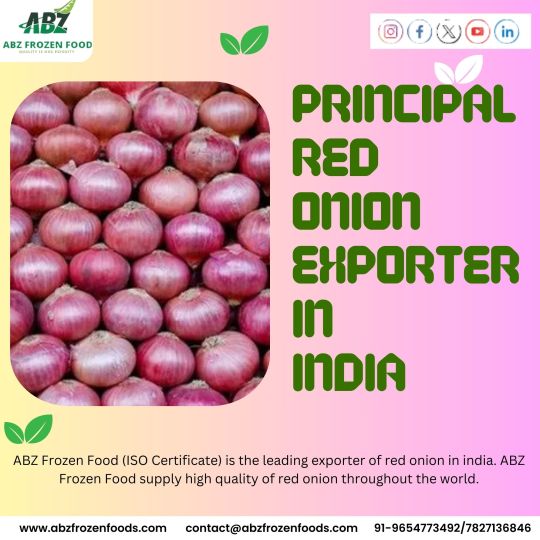
Principal Red Onion Exporter in India
ABZ Frozen Food (ISO Certifited) has established a strong global presence and have a wide network of customers and partners in different countries.Our authentic-grade red onions at ABZ Frozen Foods are sourced from large farms and reputable agriculturists who attest to the genuineness of the product packaging.For more details please call +91-9654773492,7827136846 or visit our website https://abzfrozenfoods.com/red-onion-exporter.html
#Red Onion Exporter#Indian Buffalo Meat#Buffalo Meat Exporter#Buffalo meat exporter from India#Frozen Buffalo meat Exporters in India#Onion Exporter from India#Top Red Onion Exporter in India#Wheat flour Exporter#Yellow Maize Exporter#Green Millet Exporter#Semi Husk Coconut Exporter
0 notes
Text

Exporter of Buffalo Meat From India
We are ABZ Frozen Foods Providing the best quality Indian Buffalo Meat at an affordable price, with a tempting taste, worldwide service and reaching to prospective buyers are the prime activity. We fulfill the aspect desire of providing excellent Indian Meat which is the desire of every importer. Call@ +91-9654773492/ +91-7827136846 or visit https://abzfrozenfoods.com/buffalo-meat.html
#BuffaloMeatExporter#Buffalo meat exporter from India#FrozenBuffaloMeat Exporters in India#IndianBuffaloMeatExporter
1 note
·
View note
Text
Contracts
American Lafayette House: Teamsters Internationale affiliated with EMC and NSA computing targeted, Christophe Stevens to Scott Burrill, to protect Katie Stevens. Ages 5 to 37.
MetLife Insurance: Grand Theft Auto 3 camera (also used in Halo, and Saint's Row), Gotham the television show, and the Arkham games.
Jordanian Special Intelligence: Andrew Stanley, NSA experimental family division, "Milk and Cheese" comic for use on adopted children, "Seinfeld".
Church of Latterday Saints: Submission of RomneyCare prison evasion programs; counters to National Lampoons, Biloxi Blues, and Stabbing Westward, in insurance code.
Nation-State of Israel: Formation of Facebook through The Fifth Element's opera singer, demonstrating the charity of the Jewish community in hearing complaints and dealing fairly with all; the combination of Ireland's Scientology and ASPCA, into founding members.
Hopkinton Police Department: Murder of Russian Mafiaso members, Carlin Sarkesian, Philip Enfield, Keith Velasquez; RIAA, American Bounty Guild, NORML.
MoveOn: Support of Christine Carr, character assassination of Sonya Savdie, Scarecrow and Joker and Bane submitted to Christopher Nolan, The Last Witchhunter submitted to Holocaust historians.
Central Intelligence Agency: Removal of Masonic Lodge and Boston police department from Cuban affairs, leading to a free Cuba, with alcohol imported, instead of marijuana exported.
UMass-Amherst Confidential Information Program: Downfall of Canadian marijuana market, eventual legalization of state police grown and taxed marijuana, taken from the bodies of convicts arrested for home invasion, regardless of badge or authority or origin.
MI-6 Koran Province: Election of Barack Obama, assisting ULTRA operative Melvin "Pete" Harris and Gwenn "Big Timmy" Pratt, as David "Mini-Peebo" Charlebois. Programming of Stephen Colbert, to brainwash Barack Obama's public repute into John McCain, trapping McCain and John Kerry under monitoring.
Shinchiro Abe: The death of Hunter S. Thompson, for ghostwriting "Banshee Screams for Buffalo Meat", labeling lawyers that approach cases for a standard profession of monetary income or moral desire of conscience, as corrupt, and pushing drugs on them. Hunter S. Thompson labeled a red agent, in Cantonese, "ferguzi", through a triple dive, with vandalism.
Freemasonic Temple of New York City (NYPD): The nullification of Marvel Haganah, under supervision of NYPD informant Allison Haimes, to fraud John Washburne into provision, under presumption of pedophilia, proven in court by Haganah work for Marvel, and sketch research on Israeli prison inmates in New York City. Inserted via cousins, John and Joan Cusack, with film, "Max", with victim John Washburne, as titular character, self as Adolf Hitler; there's been a terrible misunderstanding, sir.
AFROTC: Multiple papers submitted, the end of the Islamic identity of Jews and Arabs, a lasting peace, if the French can be expelled from authority of linguistic demand.
Fox Combine: The print of "Gotham", teaching American insurance logic, ending barracks hazes, and turning entitlement theft of job suits into transgender disorder; as well as culminating in a war against Zionism, for fraudulent thefts of property, with five Likud units shut down in the New World, through five dummy agents, featured in Daniel Craig's Bond films.
German Intelligence: The suit of Islamic Persian Iranian agent, Dr. Joshua Paul Golden, real name Isaiah Friedlander, Hollywood investigation agent into writers, for the Shah and the USMC, a Jimmy Carter holdover. Publicized fraudulent suit, and removal from MI-6, as a mole.
The Buddhist League: The Buddhist assassination guild's control by Hollywood and the Foreign Office, ends, with the reports of molestation of those practicing Buddhism, Shinobi, Ninpo, Islam, Shi'ism, and Judaism, for film and money, instead of blood and murder; the rejection of honor, in favor of sex, leads to rape lawsuits, from a pacifist populace's thralls, the soldiers.
The Patrarca Crime Family: The assassination by Havana Syndrome, of Essex County corrections agent, Walter Kaufman, recruiting for slave husbands and wives off pornographer's websites viewed through MUSHes, 4chan, and psychiatric forums; the spying on computer systems of collegiates, by the Calvinist system, assassinated and those law enforcement held by Israeli Defense Force by works signed in retroactive form of contracts from medicine threatened by recall to Jordan and Israel, through Boston O'Neills, Tremains.
0 notes
Text
BEST FROZEN INDIAN MEAT IN INDIA- MITHR INTERNATIONAL
Our meat division is formed with the objective of complete integration in the meat production and exports. We guarantee the supply of a range of halal buffalo meat products through its commitment to provide only the safe and quality products of highest standard by monitor the processing, packing, storage and transportation under hygienic conditions.
1 note
·
View note
Text
Best frozen meat supplier from India, mithr international
Our meat division is formed with the objective of complete integration in the meat production and exports. We guarantee the supply of a range of halal buffalo meat products through its commitment to provide only the safe and quality products of highest standard by monitor the processing, packing, storage and transportation under hygienic conditions.
0 notes
Text
Philippines History and Govt. Through the Years by Francisco M. Zulueta & Abriel M. Nebres
CH.1:The Land and The People
PART 1: THE LAND
Archipelago with more than 7,000 island/islets
Largest island is Luzon followed by Mindanao
Virgin forests cover 40,000 sq mi. and produces timber for domestic and export consumption
Forest Resources
Philippine Hardwood: Narra, apitong, guijo, lauan, tangili, tindalo & yakal
Philippine Medicinal herbs: nipa, palms, resin, rubber, abaca & rattan gums.
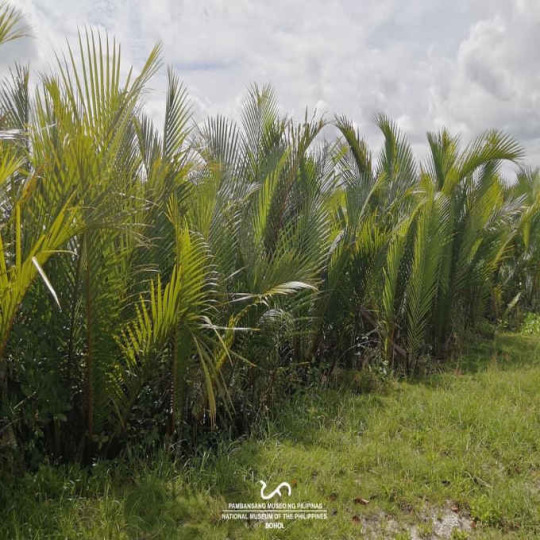
Ex.) Nipa palm above
National tree: Narra ( symbolizes filipino character and ideals). Best wood for furniture making, flooring, ceiling, balusters, walls and staircases in really prominent households.

ex.) narra tree

ex.) Narra furniture
Fish and Marine Resources
Common fish: Milkfish (Bangus), lapu-lapu, talakitok, kanduli, tamban, tanguingui, dalagang bukid & tilapia.
Smallest fish (tabyas) found in Lake buhi Camarines Sur
Turtle islands (Sulu Sea): Big turtles with meat and eggs used for gourmet delicacies
Pearls can be found deep in Palawan and Sulu waters
Largest Pearl found in Palawan; “Pearl of Allah”
Mineral Deposits
gold/silver/iron/copper/lead/manganese/zinc
Non-metallic minerals: limestones, asbestos, asphalt, clay, oil
Typhoons
takes place May-latter part of December
strong winds with sea lvl. rising in low areas causing death
Earthquakes
Earthquakes are common with the biggest earthquake in Manila happening on June 3rd, 1863, killing 400 people.
The Biggest earthquake in the Philippines took place on August 17 1976. It was measured at an 8.2 magnitude on the Richter scale.
Volcanoes
There are approx. 50 volcanoes in the archipelago, most of which are dormant/inactive.
Known for its “perfect cone” shape, Mount Mayon located in the Bicol Region is the most famous volcano for its views, however, many fatalities happened here with the most tragic eruption happening on February 1, 1814 ultimately resulting in the whole town being buried with nothing left but the belfry sticking out of the ground.
Mount Pinatubo, a volcano located in the middle of the Zambales Range in Central Luzon, erupted in 1991 and left 5 billion cubic meters of pyroclastic flow materials and silica. It it estimated that 10-15 years of rain is needed to wash it down.
Fauna
Unique animals found in the Philippines:
Tamaraw in Mindoro (a small wild buffalo)

Tarsier (The world’s smallest monkey)
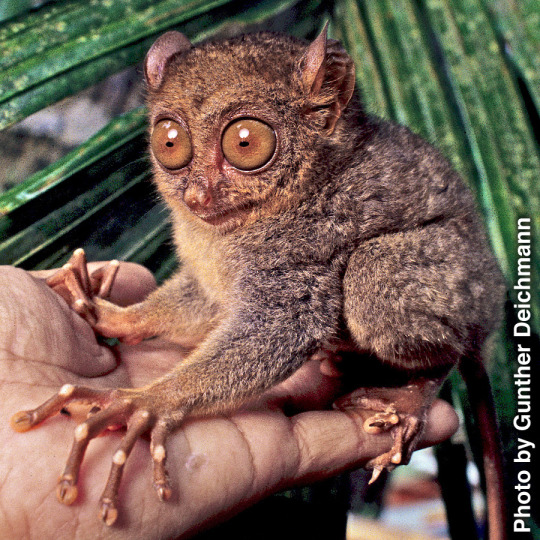
Mouse-deer of Balabac Island

Zebronkey (Manila Zoo)

There’s 26,000 species of insects, the biggest one being the giant moth.
Common birds:
Kalaw
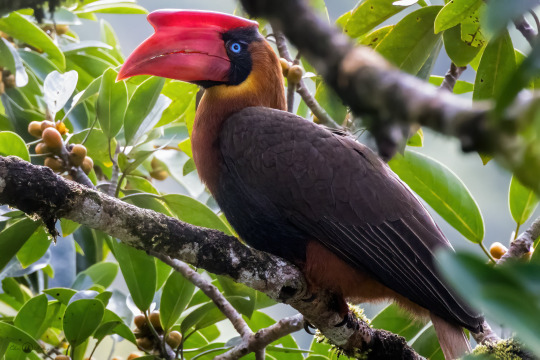
Peacock

hawk and king-fisher.
Flora
Flowers mostly bloom around May.
Philippine National Flower: Sampaguita
Sampaguitas have a pleasing smell. They are usually maid into leis and are given to prominent personalities.

There’s also the dama de noche. It blooms a night and releases a distinctive odor that sets the mood.
Dama de Noche (below)

The Bougainvillea (below)

Doña Aurora (below) is a very floriferous plant.
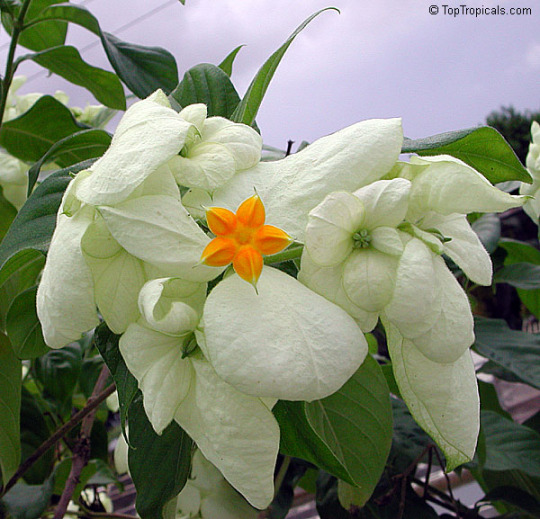
Cadena de Amor (below)

Banaba flowers (below) display a color of deep purple when opening, fading light blue when only a few days old.

Plus there are hundreds of orchids such as the waling-waling, known as the “Queen of the Orchids”

Fruits: sweet mangoes, bananas, lanzones, mangosteen, star apples, papayas, durian.
Climate
The Philippines has very fertile soil, moderately warm, frequent rain.
Two distinct climate seasons: Wet and Dry
Wet season: early June-October
Dry Season: early November-April
Agriculture
coconuts and sugar are the main exports.
rice/corn/coconuts/sugarcane/coffee/tobacco, bananas, pineapples, cabbage, onions and sweet potatoes are all products in the Philippines.
0 notes